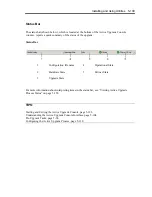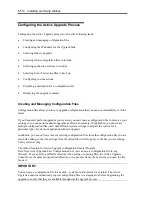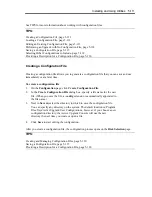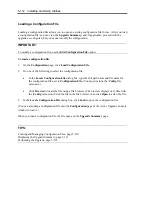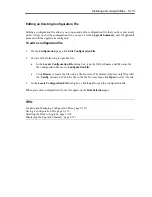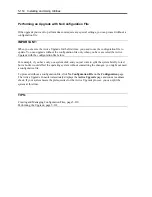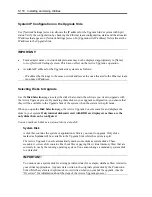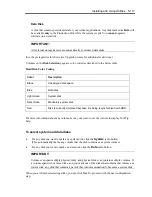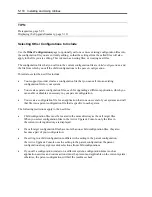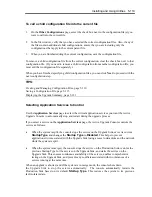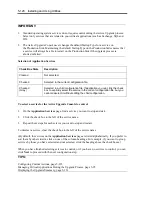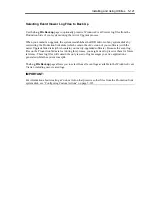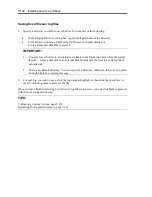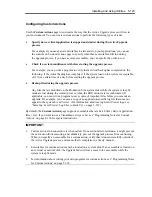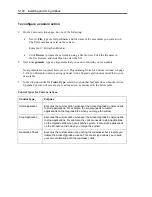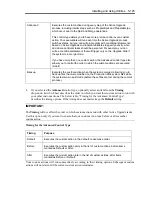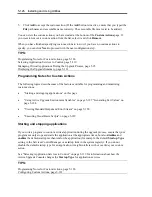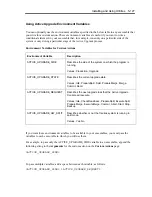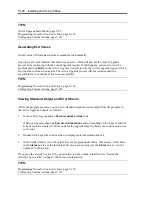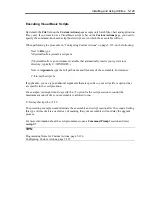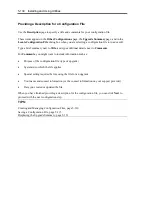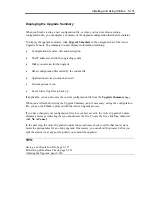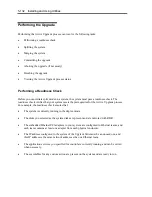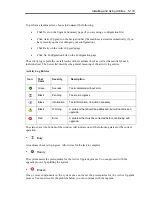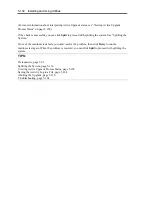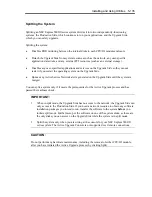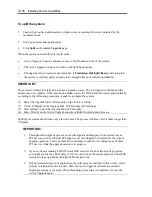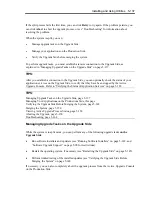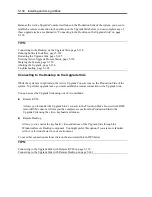
Installing and Using Utilities 5-123
Configuring Custom Actions
Use the
Custom Actions
page to customize the way that the Active Upgrade process will run in
your environment. You can create custom actions to perform the following types of tasks:
•
Specify how a critical application is stopped and started during the Active Upgrade
process.
For example if you use special executables to start and stop your applications, you can use
the controls on Custom Actions page to specify when these executables will run during
the upgrade process; if you have several executables, you can specify the order to run.
•
Check if a certain condition exists before starting the upgrade process.
For example, you can write a program to verify that a critical backup has completed on the
following; if the critical backup has completed; if the system load on the system is acceptable,
or if it is a certain time of a day before starting the upgrade process.
•
Backup files during the upgrade process.
Any files that are modified on the Production Side system disks while the system is in split
mode are lost during the commit process, when the RDR mirrors are resynchronized. If
applicable, you can write a program to save copies of important files before you commit an
upgrade. For example, you can save a copy of an application-specific log file that does not
appear in the system Event Viewer. (For information about saving Event Viewer logs, see
“Selecting Event Viewer Log Files to Back Up” on page 5-121.)
By default, the
Custom Actions
page supports executables that are batch files (.bat) or application
files (.exe). If you want to use a Visual Basic script (.vbs), see “Programming Notes for Custom
Actions” on page 5-126 for special instructions.
IMPORTANT:
1.
Custom actions run consecutively when called. If one action fails to terminate, it might prevent
the next action from executing, and, ultimately, prevent the upgrade process from continuing.
When you specify an executable for a custom action, verify that it runs successfully outside of
the Active Upgrade process, and ensure that it completes in a timely manner.
2.
Executables for custom actions must be located on a system disk. If an executable is located on
an external or network disk, the Upgrade Side will lose access to the executable while the
system is in split mode.
3.
For information about writing your own programs for custom actions, see “Programming Notes
for Custom Actions” on page 5-126.
Summary of Contents for Express5800/320Fd-MR
Page 13: ...v Appendix B I O Port Addresses This appendix lists factory assigned I O port addresses...
Page 19: ...xi THIS PAGE IS INTENTIONALLY LEFT BLANK...
Page 43: ...2 10 General Description Rear View...
Page 47: ...2 14 General Description CPU IO Module CPU IO module...
Page 67: ...2 34 General Description This page is intentionally left blank...
Page 79: ...3 12 Windows Setup and Operation 3 Confirm that RDR of the disk is cancelled...
Page 106: ...Windows Setup and Operation 3 39 This page is intentionally left blank...
Page 198: ...4 92 System Configuration This page is intentionally left blank...
Page 370: ......
Page 371: ...This page is intentionally left blank...
Page 389: ...6 18 Maintenance 3 Stop of PCI module 1 4 Start of PCI module 1...
Page 391: ...6 20 Maintenance This page is intentionally left blank...
Page 465: ...System Upgrade 8 31 board must not be mixed with N8804 005 or N8803 035...
Page 480: ......
Page 483: ......

